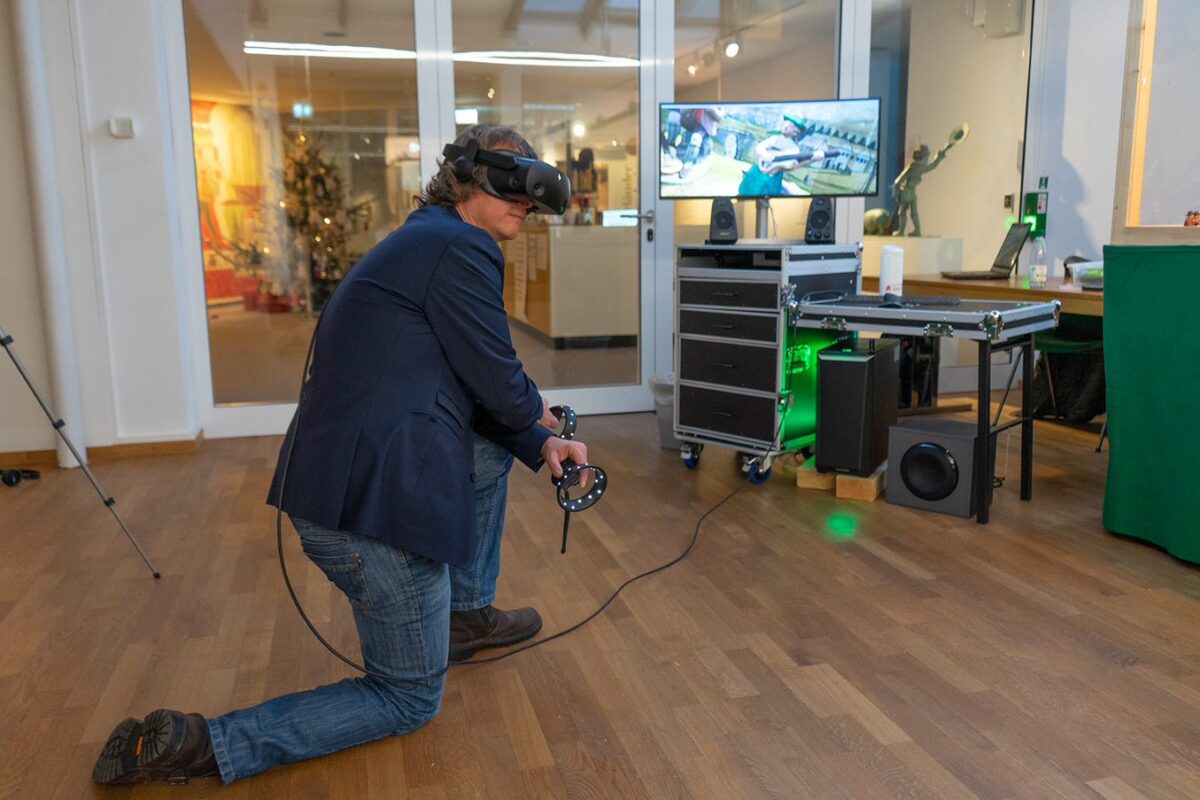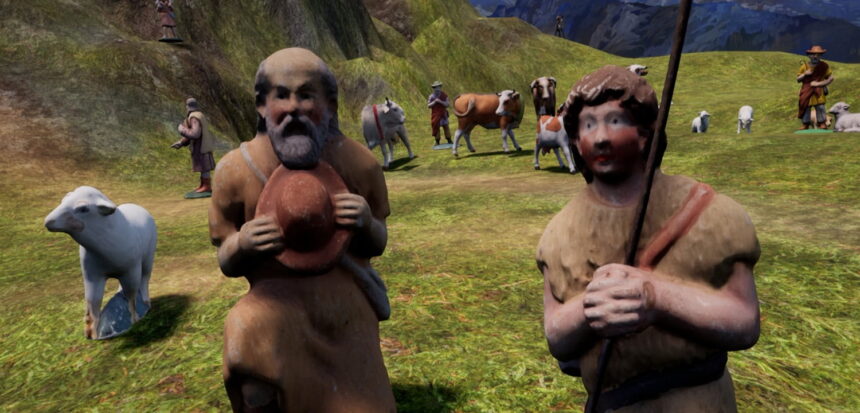Virtual reality Christmas crib: eye to eye with ox and donkey

At the Egerland Museum in Marktredwitz, Bavaria, you can not only look at a Christmas crib from the outside but shrink down to the size of the figures yourself, wander around the stable and visit the baby Jesus and Mary and Joseph in person.
The tradition of Christmas cribs is ancient in Marktredwitz, Bavaria. Since the 19th century, crib scenes with the baby Jesus and figures around them have been an integral part of the Christmas season.
In addition to the ox and donkey, Mary and Joseph and the shepherds, other scenes belong to a proper crib scene in the Fichtelgebirge: situations from everyday life, farmers with their carriages, a mountain hut with a brass band, in front of which people dance Schuhplattler, animals, a hunter who kills a fox and so on.
Visitors to the Egerland Museum in Marktredwitz can now experience all this virtually. Stefan Frank had the idea, then the museum collected 80,000 euros in funding, and the project has recently been completed: HP Reverb G2 VR glasses transport visitors to the museum from now on into a crib scene that could otherwise only be viewed from the outside.
Crib scene meets VR furnishing simulator
All the figures in the VR crib scene can be lifted and moved around - even the baby Jesus. You walk around the crib scene, enter the stable, and place the ox and donkey, even a team of horses, wherever it suits you. An angel hovers in the air, watching over everything.
"Everyone who enters the VR crib for the first time is at first dumbfounded with wonder, then many let out a 'Wow!'" says Frank. Even older people quickly get to grips with the technology, he adds. "A figure that is perhaps only twelve centimeters tall in reality suddenly stands in front of you life-size. That's impressive for many people."
He had the idea for the VR-crib five years ago and was quickly able to convince the director of the Egerland Museum, Volker Dittmar. The historical crib figures from the museum collection were photographed and sewn into 3D models in the photogrammetry software "RealityCapture". Frank took at least 400 photos of each figure, sometimes 1,800 photos for more complicated figures.

The real crib figures were digitized by photogrammetry: Using numerous photos from different perspectives, the individual figures are reconstructed three-dimensionally in special software. This makes them look particularly realistic in VR. | Image: Jörn Schumacher
The attention to detail was important to the museum: after all, Marktredwitz's crib culture is a 130-year-old tradition that was included in the nationwide register of intangible cultural heritage this year. "We are continuing the tradition with 21st-century technology," the museum director is pleased to say. To his knowledge, he has the only VR-crib in the world.
The project was made possible by funding from the EU's LEADER program of measures, the Sparkasse Hochfranken and the foundation Oberfrankenstiftung. The installation is mobile, everything fits into three flight cases and can be set up in 15 minutes. Visits to schools, churches, or events are planned.
At the moment, the crib Experience can only be experienced on-site in the museum. Access for everyone via the Internet or as an app is not planned for the time being.
VR crib: rediscovering the everyday
Dittmar, an expert on Christmas cribs, quickly realized one advantage of the technology: "I suddenly see details of the historical figures right in front of my eyes, such as cracks and scratches, which I can't even see at a distance in a real crib." Another positive side effect for the museum: thanks to the scan, the crib figures have a digital twin with the exact size information in the database. A figure can be reconstructed from this data at any time.
Frank modeled the digital landscape with the Unreal Engine. The computer that sits in the museum and allows visitors inside to view the virtual crib scene is a powerful computer "with the best NVIDIA graphics card we could get," Dittmar says. "This allows us to make changes to the environment on the computer and re-enter it after two minutes of rendering."
Museum director Dittmar is enthusiastic: "The highlight is that visitors can completely recreate the crib scene themselves. Whether mountains or valleys, houses, chapels, or figures, he can create everything under guidance with just a few clicks. We show school groups, for example, how they can build their own crib scene digitally. And afterward they can walk around in it in VR."
Author: Jörn Schumacher
Note: Links to online stores in articles can be so-called affiliate links. If you buy through this link, MIXED receives a commission from the provider. For you the price does not change.